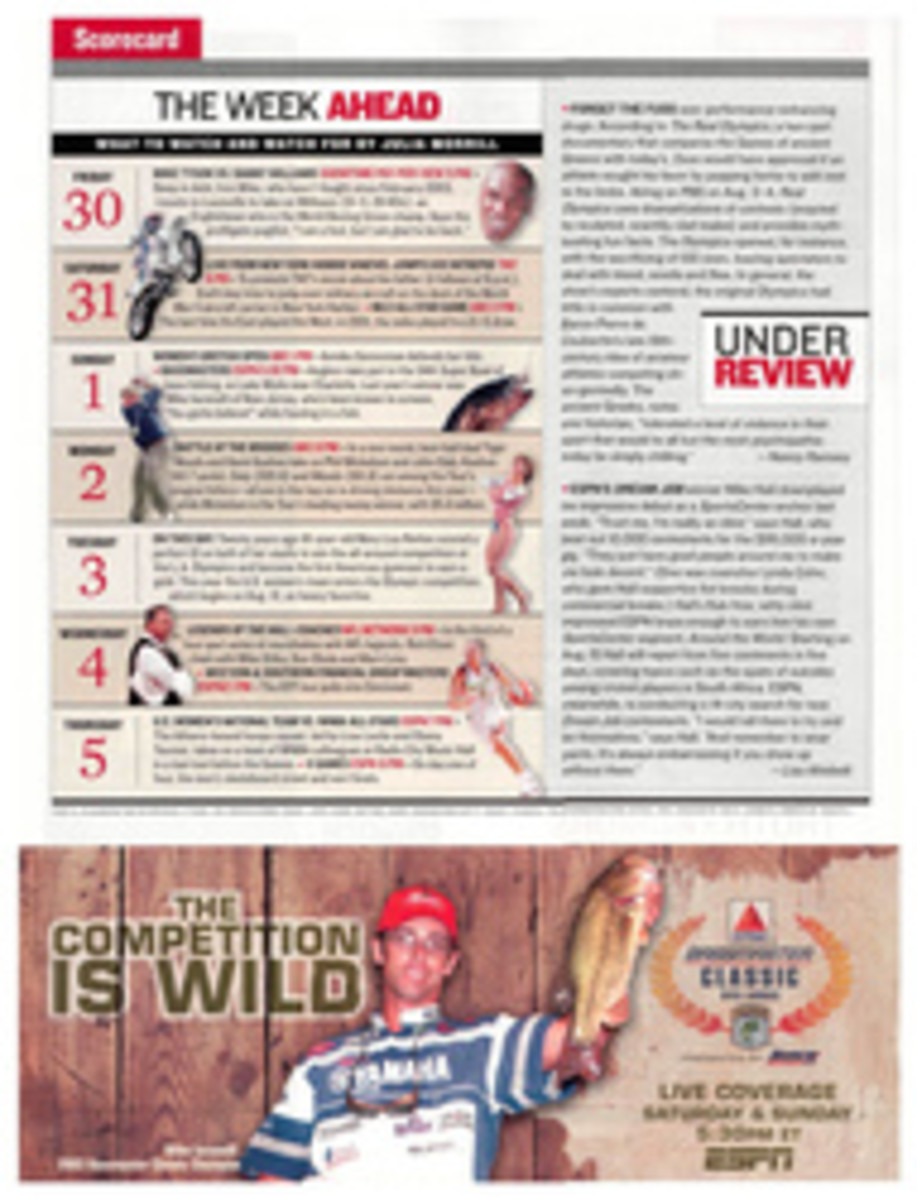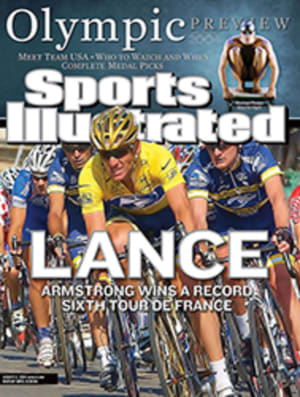
Greeks Gone Wild As the Olympics return to their roots, two books lay bare the truths about the ancient Games
THE NAKED OLYMPICS
by Tony Perrottet
Random House 214 pages $12.95
ANCIENT GREEK ATHLETICS
by Stephen G. Miller
Yale University Press 288 pages $35.00
Think the modern Olympics are a bit over the top? Then imagine an
event that combined the sports spectacle we know today with a
mass religious pilgrimage capped by the ritual slaughter and
consumption of 100 white oxen; orgies of partying that would make
spring break look like a church picnic; and the chance to look
upon the face of God Himself.
Those were the ancient Olympics, and as the Summer Games return
this year to their birthplace in Greece, two new, complementary
books bring vividly to life the Olympics' rich, often bizarre
history. In The Naked Olympics, Tony Perrottet will remind you of
your favorite high school teacher, the one so passionate for his
subject that you couldn't help getting swept up by it. Readers of
all ages will enjoy, and profit from, his tour through the
ancient Games, loaded with well-told tales from history and
mythology. Some academics may scowl at his tendency to generalize
or simplify, but then some academics need to get a life.
Those sticklers should stick to Ancient Greek Athletics, by
University of California archaeologist Stephen G. Miller. He's a
scholar through and through, scrupulously accurate and
restrained. Of course, his book is not nearly as much fun to
read, but it's much more authoritative, and its
photographs--mostly of ancient sculptures of athletes and pottery
decorated with sports images--are as entertaining as Perrottet's
prose.
Perrottet's title is a little misleading. Olympic athletes
weren't exactly naked. They slathered their bodies in olive oil,
then dusted themselves with powders of various colors. But the
word "naked" conveys exactly the right impression, for the
ancient Olympics, which ran from 776 B.C. to 394 A.D., were a
pagan festival that mixed the rawest sorts of sex and violence
with the most mystical of religious observances.
Athletes gathered in the city of Elis for months of training and
trials and then marched 40 miles to Olympia, pausing on the way
to sacrifice a pig and scan its liver for omens. There was no
Olympic torchbearer--that's "pseudoclassical kitsch," as
Perrottet puts it, introduced by the Nazis for the 1936 Berlin
Olympics--nor were there any seats in the stadium. The root of
the Greek word stadion means "a place to stand," and the tens of
thousands of fans did just that for the five days of the Games.
To discourage cheating or the use of witchcraft, athletes were
required to present themselves before a terrifying 40-foot statue
of Zeus--his muscular body carved from gleaming ivory, his robes
plated in gold, his cedar throne carved with images of Amazon
warriors. Before this harrowing image they swore to play fair.
And just in case anyone forgot his oath, judges at the Games were
armed with lashes, which were used liberally on rule breakers of
all kinds. Such measures may seem harsh to those who consider the
Olympics a festival of international amity, but Perrottet
explains that to the Greeks the Olympics "weren't so much a
celebration of peace as a substitute for open violence."
In fact, Olympic violence was horrific. Boxing and wrestling
matches often resulted in death. One ancient pugilist was said to
have swallowed every one of his teeth in a single bout rather
than give his opponent the satisfaction of seeing him spit them
out. A boxer named Demoxenos was disqualified for ripping open an
opponent's torso and yanking out his intestines. Another event,
pankration, was similarly extreme. Sostratos of Sicyon was
nicknamed Mr. Digits because he so enjoyed breaking his
opponents' fingers.
Between events, male fans were entertained in temporary brothels
called kineteria. In fact, "sex and athletics were always
intertwined," writes Perrottet, who notes that the athletes--all
men, of course--often took pleasure in each other's company. At
one Greek sports site in Nemea, scholars were delighted to find
legible graffiti, scrawled by ancient competitors as they waited
in a tunnel before the Games. "Look up Moschos in Philippi,"
wrote one jock. "He's cute!"
COLOR PHOTO: RANDOM HOUSE
COLOR PHOTO: YALE
COLOR PHOTO: STERLING PUBLISHING CO.
COLOR PHOTO: SPORTSCLASSIC BOOKS
Heavy Duty
Among a host of new large-format books in the run up to Athens
2004, a pair stand out
Listen: Do you hear groaning sounds? Those are bookstore shelves
sagging under the weight of the latest load of big Olympic tie-in
books. Many of these volumes are assembled with the same degree
of care that goes into making cheap sausage--and are just as
likely to turn your stomach. There are two exceptions. The
Olympics: Athens to Athens 1896-2004 (Weidenfeld & Nicolson, 360
pages, $34.95) is notable for its mesmerizing historic photos,
including such surprises as a portrait of 64-year-old Swede Oscar
Swahn, who won gold in 1912 in "team running deer shooting,
single shot." For its wealth of information, you can't beat David
Wallechinsky's The Complete Book of the Summer Olympics
(Sportsclassic Books, 1,171 pages, $24.95), which exhaustively
lists the final results of every event ever held in the modern
Games. Beyond that, Wallechinsky provides a magnificent stream of
trivia that could win you a fortune in a sports bar. A typical
nugget: In 1988, bantamweight boxer Eduard Paululum was poised to
become the first-ever Olympic competitor from the tiny island
nation of Vanuatu. "Unfortunately," reports Wallechinsky,
"Paululum ate a large breakfast before the weigh-in and was
disqualified for being one pound overweight." --C.H.

